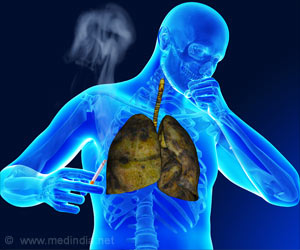Highlights
- Chinese medicine to treat malaria could potentially treat tuberculosis, finds a new study.
- The ancient remedy called artemisinin, blocks the ability of TB-causing bacteria to become dormant.
- The bacteria may become more sensitive to the drugs and could shorten the course of therapy.
Mycobacterium tuberculosis needs oxygen to thrive in the body. The immune system starves this bacterium of oxygen to attack the infection. The research team found that artemisinin attacks a molecule called heme, which is found in the bacteria oxygen sensor.
Artemisinin turns off the oxygen sensor and stopped the disease's ability to sense how much oxygen it was getting.
"When TB bacteria are dormant, they become highly tolerant to antibiotics. Blocking dormancy makes the TB bacteria more sensitive to these drugs and could shorten treatment times," said Abramovitch, an assistant professor in the College of Veterinary Medicine.
"When the Mtb is starved of oxygen, it goes into a dormant state, which protects it from the stress of low-oxygen environments. If Mtb can't sense low oxygen, then it can't become dormant and will die," said Abramovitch.
Dormant TB can remain inactive in the body for decades. But a weaker immune system can activate the bacteria and spread the infections. Whether the bacteria is inactive or active, TB can take up to six months to treat, which is one of the main reasons the disease is difficult to control.
The research could help shorten the course of therapy because it can clear the hard-to-kill bacteria, leading to improved patient outcomes and also slow down the evolution of drug-resistant TB.
The study is published in the journal Nature Chemical Biology.
Tuberculosis
Tuberculosis is a global problem that affects two billion people. New tools are required to reduce the prevalence, and prevent drug resistance. The current research could pave a new way to kill the bacteria.
Facts
- Two billion people worldwide are infected with Mycobacterium tuberculosis
- TB is curable and preventable
- TB is the leading cause of death among HIV positive patients
- An estimated 480 000 people developed multidrug-resistant TB in 2015
- Huiqing Zheng, Christopher J Colvin, Benjamin K Johnson, Paul D Kirchhoff, Michael Wilson, Katriana Jorgensen-Muga, Scott D Larsen, Robert B Abramovitch.Inhibitors of Mycobacterium tuberculosis DosRST signaling and persistence. Nature Chemical Biology, (2016),DOI: 10.1038/nchembio.2259














